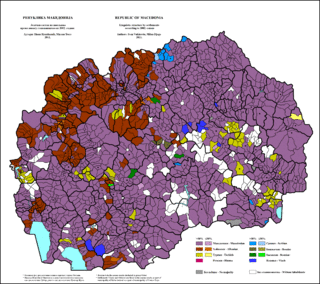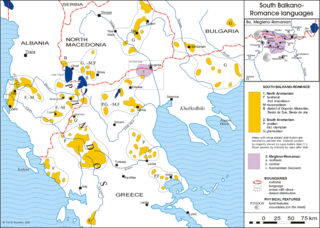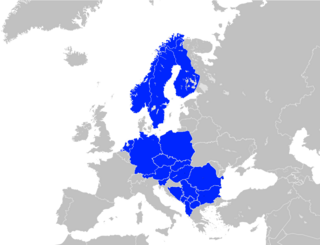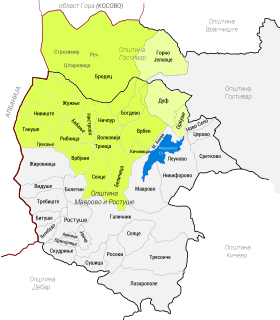 W
WThe official language of North Macedonia is Macedonian, while Albanian has co-official status. Macedonian is spoken by roughly two-thirds of the population natively, and as a second language by much of the rest of the population. Albanian is the largest minority language. There are a further five national minority languages: Turkish, Romani, Serbian, Bosnian, and Aromanian. The Macedonian Sign Language is the country's official sign language.
 W
WAlbanian is an Indo-European language spoken by the Albanians in the Balkans and the Albanian diaspora in the Americas, Europe and Oceania. With about 7.5 million speakers, it comprises an independent branch within the Indo-European languages and is not closely related to any other Indo-European language.
 W
WThe Aromanian language, also known as Macedo-Romanian or Vlach, is an Eastern Romance language, similar to Megleno-Romanian, Istro-Romanian and Romanian, spoken in Southeastern Europe. Its speakers are called Aromanians or Vlachs. Some scholars, mostly Romanian ones, consider Aromanian a dialect of Romanian.
 W
WBulgarian is a South Slavic language spoken in Southeastern Europe, primarily in Bulgaria. It is the language of Bulgarians.
Macedonian is an Eastern South Slavic language. It is part of the Indo-European language family, and is one of Slavic languages, which are part of a larger Balto-Slavic branch. Spoken as a first language by around two million people, it serves as the official language of North Macedonia. Most speakers can be found in the country and its diaspora, with a smaller number of speakers throughout the transnational region of Macedonia. Macedonian is also a recognized minority language in parts of Albania, Bosnia and Herzegovina, Romania, and Serbia and it is spoken by emigrant communities predominantly in Australia, Canada and the United States.
 W
WMegleno-Romanian is a Balkan Romance language, similar to Aromanian or a dialect of the Romanian language. It is spoken by the Megleno-Romanians in a few villages in the Moglena region that spans the border between the Greek region of Macedonia and North Macedonia. It is also spoken by emigrants from these villages and their descendants in Romania and by a small Muslim group in Turkey. It is considered an endangered language.
 W
WRomani is an Indo-Aryan macrolanguage of the Romani communities. According to Ethnologue, seven varieties of Romani are divergent enough to be considered languages of their own. The largest of these are Vlax Romani, Balkan Romani (600,000), and Sinte Romani (300,000). Some Romani communities speak mixed languages based on the surrounding language with retained Romani-derived vocabulary – these are known by linguists as Para-Romani varieties, rather than dialects of the Romani language itself.
 W
WSerbian is the standardized variety of the Serbo-Croatian language mainly used by Serbs. It is the official and national language of Serbia, one of the three official languages of Bosnia and Herzegovina and co-official in Montenegro and Kosovo. It is a recognized minority language in Croatia, North Macedonia, Romania, Hungary, Slovakia, and the Czech Republic.
 W
WTurkish, also referred to as Istanbul Turkish or Turkey Turkish, is the most widely spoken of the Turkic languages, with around 70 to 80 million speakers. It is the national language of Turkey. Significant smaller groups of Turkish speakers exist in Iraq, Syria, Germany, Austria, Bulgaria, North Macedonia, Northern Cyprus, Greece, the Caucasus, and other parts of Europe and Central Asia. Cyprus has requested that the European Union add Turkish as an official language, even though Turkey is not a member state.
 W
WThe Upper Reka Albanian dialect is a member of the wider northern Albanian Gheg dialect subgroup of the Albanian language spoken by northern Albanians. Speakers of the dialect are mainly located within the territory of the sub-region of Upper Reka in north-western Macedonia. Due to the geographical isolation of the Upper Reka region, the Upper Reka dialect also developed linguistic peculiarities that differentiate it from other varieties of Albanian. Within the Gheg dialects, the Upper Reka dialect is classified as a Central Gheg dialect, along with the dialects of the Kruja, Mati and Dibra regions.